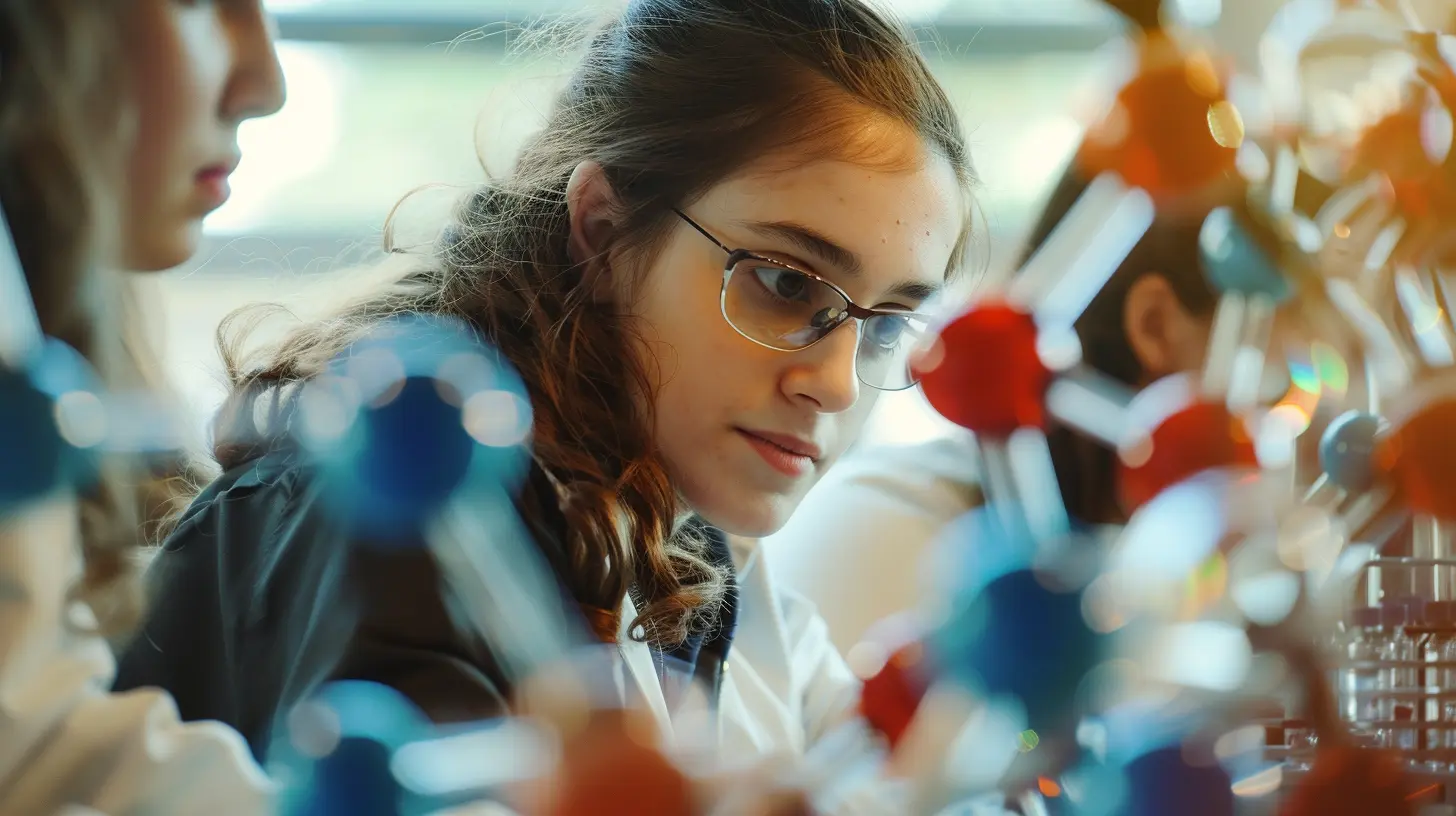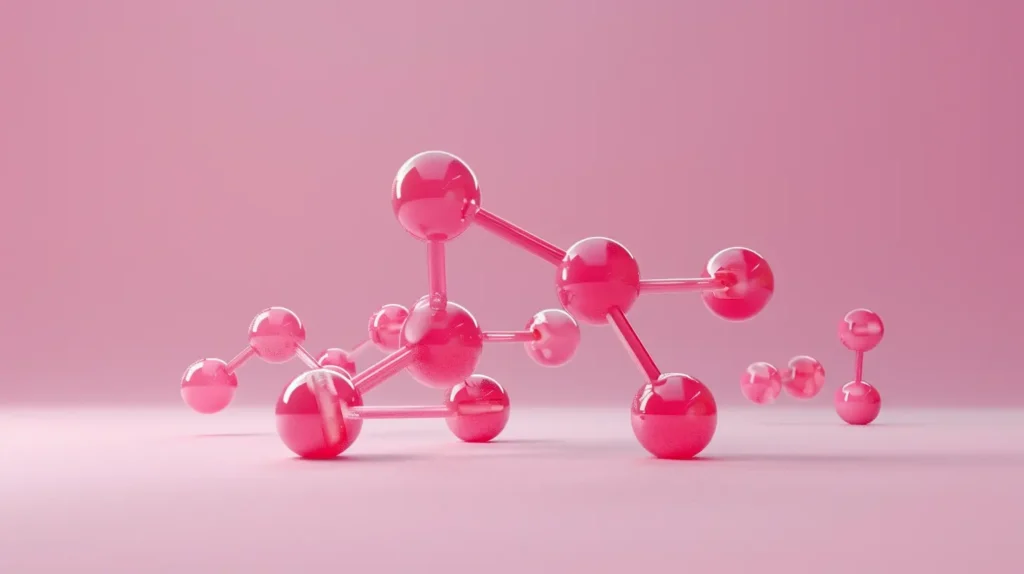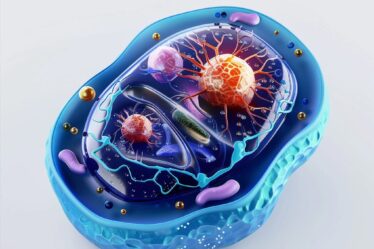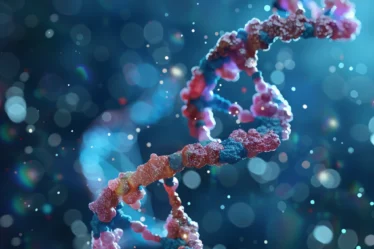
Muscle fatigue during intense exercise happens when cells run low on oxygen. Pyruvate starts accumulating, and your body shifts to different reactions that allow muscles to keep working. This process produces lactate, which causes the familiar burning sensation and signals that cells rely on anaerobic energy production.
This study guide explains how pyruvate forms in glycolysis and converts into various products depending on conditions. You will learn about its chemical structure, phosphoenolpyruvate, and pyruvate kinase. We break down energy production, gluconeogenesis, and fermentation while showing enzyme-controlled reactions and disorders linked to pyruvate metabolism.
Pyruvate: Quick Summary
Do you just need the basics? Here’s a simple explanation of how pyruvate connects to energy production and metabolism:
🟠 Pyruvate forms at the end of glycolysis and serves as a central molecule linking glucose breakdown with further energy-producing reactions.
🟠 In the presence of oxygen, pyruvate converts into acetyl-CoA and enters the citric acid cycle, releasing energy stored in glucose.
🟠 Without oxygen, pyruvate changes into lactate in animals or ethanol in yeast to keep ATP production going during anaerobic conditions.
🟠 Pyruvate also supports amino acid metabolism by turning into alanine through transamination reactions.
🟠 Enzymes like pyruvate kinase and the pyruvate dehydrogenase complex control these pathways, and their defects can cause metabolic disorders.
🟠 Gluconeogenesis reverses glycolysis by converting pyruvate back into glucose, helping maintain blood sugar during fasting.
What is Pyruvate and How Does It Form?
Pyruvate is a three-carbon molecule with a carboxyl group and a ketone group. Its chemical formula is CH₃COCOOH, but inside your cells, it usually appears as the ion CH₃COCOO⁻. You produce pyruvate at the end of glycolysis when one glucose molecule splits into two pyruvate molecules during energy release.
Your cells can also make pyruvate from lactate or alanine. Lactate dehydrogenase changes lactate back into pyruvate, while alanine transaminase removes the amino group from alanine. These reactions help keep energy production going, especially when glucose or oxygen levels drop.
Main pathways forming pyruvate:
- Glycolysis from glucose
- Conversion of lactate by lactate dehydrogenase
- Transamination of alanine by alanine transaminase
Pathways, Enzymes, and By-products
| Pathway | Enzyme | By-products |
| Glycolysis | Pyruvate kinase | ATP |
| Lactate conversion | Lactate dehydrogenase | NAD⁺ |
| Alanine transamination | Alanine transaminase | α-ketoglutarate |
Pyruvate Fuels the Citric Acid Cycle
After glycolysis, pyruvate moves into the mitochondria. There, it changes into acetyl-CoA through a series of enzyme-controlled steps. This reaction happens inside the pyruvate dehydrogenase complex. One carbon atom breaks off as carbon dioxide, while the remaining two-carbon group attaches to coenzyme A.
Acetyl-CoA enters the citric acid cycle, where your cells release energy stored in glucose. This energy supports processes like muscle movement, nerve signals, and active transport. The reaction also produces NADH, which stores energy your cells use later during ATP production.
The conversion happens only when oxygen is present. Once pyruvate changes into acetyl-CoA, your cells commit it fully to energy production. You cannot reverse this step.
Steps converting pyruvate to acetyl-CoA:
- Pyruvate crosses the mitochondrial membrane.
- Pyruvate dehydrogenase removes one carbon as carbon dioxide.
- The two-carbon group binds to coenzyme A.
- Acetyl-CoA forms and enters the citric acid cycle.
- NAD⁺ changes to NADH, storing energy.
Pyruvate Forms Lactate or Ethanol Without Oxygen
When your cells run low on oxygen, they switch to anaerobic reactions to keep producing energy. Pyruvate stops moving into the mitochondria and instead takes another path. In your muscles, lactate dehydrogenase converts pyruvate into lactate. This reaction uses NADH and restores NAD⁺ so glycolysis can continue.
Lactate builds up during intense exercise. That’s what causes the burning feeling in your muscles. Once oxygen returns, your body clears lactate and turns it back into pyruvate or glucose.
Yeast and some bacteria handle anaerobic conditions differently. They turn pyruvate into ethanol and carbon dioxide through alcoholic fermentation. First, pyruvate loses one carbon atom as carbon dioxide. Then, the remaining molecule converts into ethanol. This process also regenerates NAD⁺ to keep glycolysis going.
Both pathways allow cells to make ATP without oxygen. Your cells remove lactate when they get oxygen again. In yeast, ethanol stays as waste. These reactions show how cells adjust to keep working when oxygen is missing.
Pyruvate Forms Alanine and Supports Amino Acid Synthesis
Your cells convert pyruvate into alanine through a reaction called transamination. The enzyme alanine transaminase moves an amino group from glutamate to pyruvate. This forms alanine and α-ketoglutarate in one step.
When your body breaks down proteins, this reaction helps transfer nitrogen safely between tissues. Muscle cells send alanine to the liver, where it turns back into pyruvate. At the same time, the amino group from alanine moves to α-ketoglutarate, creating glutamate.
Pyruvate from this reaction can enter the citric acid cycle or fuel gluconeogenesis. Meanwhile, the nitrogen from glutamate leaves the body as urea. This process connects protein breakdown with energy production.
Transamination reactions like this keep amino acids balanced while helping your cells manage energy and nitrogen. You depend on these steps every day, especially when your body breaks down proteins for fuel or repairs damaged tissues.
Phosphoenolpyruvate Connects to Pyruvate in Energy Reactions
Phosphoenolpyruvate (PEP) is a high-energy molecule that connects glycolysis and gluconeogenesis. During glycolysis, pyruvate kinase converts PEP into pyruvate. This reaction produces ATP and releases energy your cells use right away. The large energy drop keeps this step one-way and makes it the final stage of glycolysis.
When your body needs glucose, the process reverses through gluconeogenesis. Pyruvate first changes into oxaloacetate. Then, the enzyme phosphoenolpyruvate carboxykinase (PEPCK) converts oxaloacetate into PEP. This step requires GTP as an energy source.
PEP also supports other reactions in plants and bacteria, but in your body, it mainly balances energy needs. You switch between glycolysis and gluconeogenesis depending on activity, food intake, or fasting. PEP helps regulate these changes so your blood glucose stays steady.
Pyruvate Carboxylase Converts Pyruvate to Oxaloacetate
Pyruvate carboxylase converts pyruvate into oxaloacetate inside the mitochondria. This reaction adds carbon dioxide and uses ATP. Oxaloacetate keeps the citric acid cycle running and feeds into gluconeogenesis when needed.
Your cells activate pyruvate carboxylase when acetyl-CoA builds up. This signal means energy is available, but the cycle needs more oxaloacetate to continue. The enzyme uses biotin to carry out the reaction.
Oxaloacetate also starts gluconeogenesis when your body needs glucose. The liver produces glucose this way during fasting or intense exercise. By converting pyruvate into oxaloacetate, your cells adjust energy production based on what you need at that moment.
Gluconeogenesis Builds Glucose from Pyruvate
Gluconeogenesis is the process where your cells build glucose from smaller molecules like pyruvate. This happens mostly in the liver and kidneys when your body needs glucose, especially during fasting or long exercise. The process starts in the mitochondria, where pyruvate converts into oxaloacetate. Pyruvate carboxylase controls this step and uses ATP.
Oxaloacetate then turns into phosphoenolpyruvate (PEP) with help from phosphoenolpyruvate carboxykinase (PEPCK). From there, PEP moves through several reactions that reverse glycolysis. These steps require energy from ATP and GTP.
Not every glycolysis step runs backward. Your cells use different enzymes to bypass the irreversible stages. For example, fructose 1,6-bisphosphatase removes a phosphate group where phosphofructokinase added it during glycolysis. This adjustment keeps the process flexible.
The goal of gluconeogenesis is simple—restore glucose so your brain, muscles, and other organs get enough energy. Once glucose forms, it either stays in the liver or moves into the bloodstream. This process helps you maintain blood sugar levels when you aren’t eating.
Glucose 6 Phosphatase Completes Gluconeogenesis
The final step of gluconeogenesis happens when glucose 6 phosphatase removes a phosphate group from glucose-6-phosphate. This reaction takes place inside the liver and releases free glucose into the bloodstream.
Without this enzyme, glucose would stay trapped inside liver cells and couldn’t leave. Glucose 6 phosphatase solves this problem by breaking the bond between glucose and the phosphate group. Once free, glucose moves out of the liver and travels through your blood to cells that need energy.
This step is unique to the liver and kidneys. Other tissues lack glucose 6 phosphatase, which prevents them from releasing glucose. That’s why your liver controls blood sugar levels.
This reaction finishes gluconeogenesis and makes sure your body has a steady glucose supply. After fasting or exercise, it keeps your brain, muscles, and other organs working. By removing the phosphate group, glucose 6 phosphatase makes glucose available right when your body needs it.
Enzymes Control Pyruvate Reactions and Metabolic Disorders
Your cells rely on enzymes to control pyruvate reactions. Each enzyme keeps energy production steady and supports other metabolic processes. When one of them stops working, serious health problems follow.
Pyruvate Kinase Deficiency and Hemolytic Anemia
Pyruvate kinase finishes glycolysis by converting phosphoenolpyruvate into pyruvate. It also produces ATP. Without enough ATP, red blood cells break down too early. This causes hemolytic anemia, leaving you tired and weak because your body can’t replace red blood cells fast enough.
Lactate Dehydrogenase and Exercise Intolerance
Lactate dehydrogenase turns pyruvate into lactate when oxygen is low. If this enzyme fails, your muscles can’t recycle NAD⁺ during intense activity. You feel exhausted fast, and your muscles may hurt or break down after exercise.
Pyruvate Dehydrogenase Complex Disorders
The pyruvate dehydrogenase complex converts pyruvate into acetyl-CoA. When mutations block this step, pyruvate builds up and turns into lactate instead. This causes muscle weakness, breathing problems, and delays in development because your cells lose energy.
Mitochondrial Pyruvate Carrier (MPC) Defects
The mitochondrial pyruvate carrier moves pyruvate into the mitochondria. If it stops working, pyruvate stays outside, and energy production drops. This can cause muscle weakness, nerve damage, and high pyruvate levels in your blood.
Tutoring Section: Learn Pyruvate Pathways with a Biochemistry Tutor
Pyruvate pathways can get tricky, especially when you’re trying to follow each reaction from glycolysis to the citric acid cycle or fermentation. It’s easy to get lost in the details. That’s where a private chemistry tutor for high school can really help.
During tutoring biochemistry Sheffield sessions, you don’t just memorize steps—you actually work through them. You see how pyruvate turns into acetyl-CoA when oxygen is there or becomes lactate when it’s not. It starts to make sense when someone explains why your cells switch paths.
If you’ve ever felt stuck on transamination or gluconeogenesis, booking chemistry or biology lessons Leicester gives you the space to ask questions and slow down. A private teacher walks you through how enzymes like pyruvate kinase or lactate dehydrogenase control these reactions.
One-on-one biochemistry tutoring Birmingham helps you practice problems you’ll actually see on tests. You build confidence, not just cram facts. Organic chemistry tutoring Manchester sessions are great for clearing up confusing diagrams and reactions that never seem to click in class.
If this sounds like what you need, book your first session today on meet’n’learn.
Looking for more resources? Check out our Biology blogs for additional learning material. If you’re ready for extra help, a tutor can guide you through the most challenging topics with clarity and patience.
Pyruvate: Frequently Asked Questions
1. What is pyruvate in chemistry?
Pyruvate is a three-carbon molecule formed during glycolysis when glucose breaks down.
2. How is pyruvate converted to acetyl-CoA?
Pyruvate converts to acetyl-CoA by the pyruvate dehydrogenase complex inside the mitochondria.
3. What happens to pyruvate without oxygen?
Without oxygen, pyruvate changes into lactate or ethanol through anaerobic reactions.
4. What is pyruvate kinase?
Pyruvate kinase is an enzyme that turns phosphoenolpyruvate into pyruvate while producing ATP.
5. What is gluconeogenesis from pyruvate?
Gluconeogenesis converts pyruvate back into glucose through multiple enzyme-controlled steps.
6. Can a chemistry tutor help me learn pyruvate pathways?
Yes, a chemistry tutor Birmingham can explain pyruvate reactions clearly and help you solve practice problems.
7. What is the role of lactate dehydrogenase with pyruvate?
Lactate dehydrogenase converts pyruvate into lactate and recycles NAD⁺ during anaerobic conditions.
8. Where can I book organic chemistry tutoring for pyruvate reactions?
You can book organic chemistry tutoring Manchester sessions to review pyruvate reactions and related pathways.
Sources:



